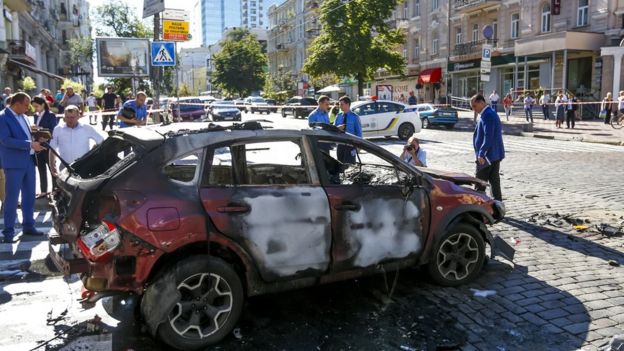Although the Syria peace talks have stalled in recent months, closed-door discussions continue between the United States and Russia to resolve the current impasse. As these discussions go on, it has become increasingly clear that criminal justice is not a priority for either the UN Special Envoy or the international brokers. Even though amnesties have not been discussed publicly, there is a high likelihood that they will be included if a final deal is ever reached. In fact, as the Syria Justice and Accountability Centre (SJAC) wrote last year, amnesties are a common component of peace agreements, taking many different forms, ranging from conditional amnesties (as in South Africa) to wholesale blanket amnesties (as in Lebanon). Broad, unconditional amnesties, however, have increasingly been rejected by both international and national courts, and the International Committee of the Red Cross has gone so far to assert that the prohibition on blanket amnesties for those most responsible for gross violations of human rights constitutes customary international law and must be adhered to by all states.
In reality, however, these court decisions and expert opinions have not seemed to have much influence on peace negotiations, particularly those in the Middle East. Former Yemeni president Ali Abdullah Saleh and his aides, for example, received blanket amnesties in a deal mediated by the Gulf Cooperation Council and supported by the international community. Similarly in Syria, it seems as though President Bashar al-Assad will receive some sort of amnesty based on how the negotiations have prioritized peace over justice to date. So what does international practice say about the peace vs. justice dichotomy and what can Syrians who seek justice for their grievances expect from a future peace agreement negotiated under the current framework?
Traditionally, justice has been seen as an impediment to peace, but there is a growing recognition that peace agreements that do not address grievances often lead to renewed conflict. Studies have shown that countries which utilize a combination of amnesties and prosecutions are more likely to have lasting peace than countries which only utilize one mechanism. The Rome Statute of the International Criminal Court is the foundation of the modern notion that justice for war crimes, crimes against humanity, and genocide must not be sacrificed for any reason, and the Inter-American Court as well as national courts in Argentina and, most recently, El Salvador, have struck down amnesty laws that shielded those most responsible for war crimes from accountability.
In reality, there must be a balance of peace and justice. The question is how to leverage amnesties to get important concessions while still ensuring that those most responsible are tried. In prolonged and massive conflicts like Syria, it is quite difficult to hold all perpetrators accountable due to the scale of violations. According to Daniel Serwer, SJAC’s newest Board member and Director of the Conflict Management Program at the John Hopkins School of Advanced International Studies, “It is impossible to prosecute everyone in a situation as fraught and violent as Syria. It should be up to Syrians to decide whom they want to prosecute, based on the evidence available, the capacity of whatever judicial system is used and the nature administrative measures like vetting and lustration that are less taxing on the judiciary, which is bound to be weakened after a ferocious war.” The trick is to create the conditions for peace within the political agreement while also ensuring society and victims feel as though their grievances have been acknowledged and will be addressed.
Even if justice mechanisms are included in a final peace agreement, the timeline will likely disappoint most Syrians. According to Serwer, “Justice is always slower than people like. Only rough justice can be done quickly, but that can lead to revenge, autocracy, and renewal of conflict.” Examples from other post-conflict or post-authoritarian countries demonstrate that it can often take years, if not decades, for perpetrators to see the inside of a courtroom. Blanket amnesties can further delay the already lengthy justice process. It takes time for national courts in post-conflict countries to rebuild and gain sufficient capacity, legitimacy, and independence to review and overturn blanket amnesty laws. In Chile, the 1978 amnesty law passed by the military regime of Augusto Pinochet was in place for 20 years before the Supreme Court struck it down, opening the opportunity for prosecutions. Since then, 1,000 cases have been opened, and by 2014, 75 of Pinochet’s secret police were sentenced to prison time. Similar examples can be found in Argentina, Guatemala, El Salvador, Colombia, Uruguay, and Peru. Outside of Latin America, Uganda’s Supreme Court recently ruled on its 2000 amnesty law, which granted immunity to fighters and commanders of the Lord’s Resistance Army (LRA). The court found that the law exempted grave international crimes, allowing LRA commander Thomas Kwoyelo to be prosecuted for violations of the Fourth Geneva Convention. While these instances represent a promising trend, their global impact has so far been limited and will likely not influence the outcome of the Syrian conflict.
Amnesties, specifically conditional amnesties, will never be completely dispensable, particularly in large-scale conflicts with numerous perpetrators. Stability requires a peace agreement that the parties to the conflict consent to sign and implement. In turn, transitional justice requires a measure of stability to be possible. Thus, transitional justice and peace are really two sides of the same coin. Transitional justice relies on peace, and long-term peace relies on the type of reconciliation that only a holistic transitional justice process can provide. For Syria, it will be important for the UN and international mediators to promote a balance of justice and amnesties within a final peace agreement. It will require sacrifices and tough choices, but ignoring justice completely, as in Yemen, is not a feasible option.
For more information or to provide feedback, please contact SJAC at info@syriaaccountability.org.
(This article was originally featured on the Syria Justice & Accountability Centre’s website and can be found here.)






